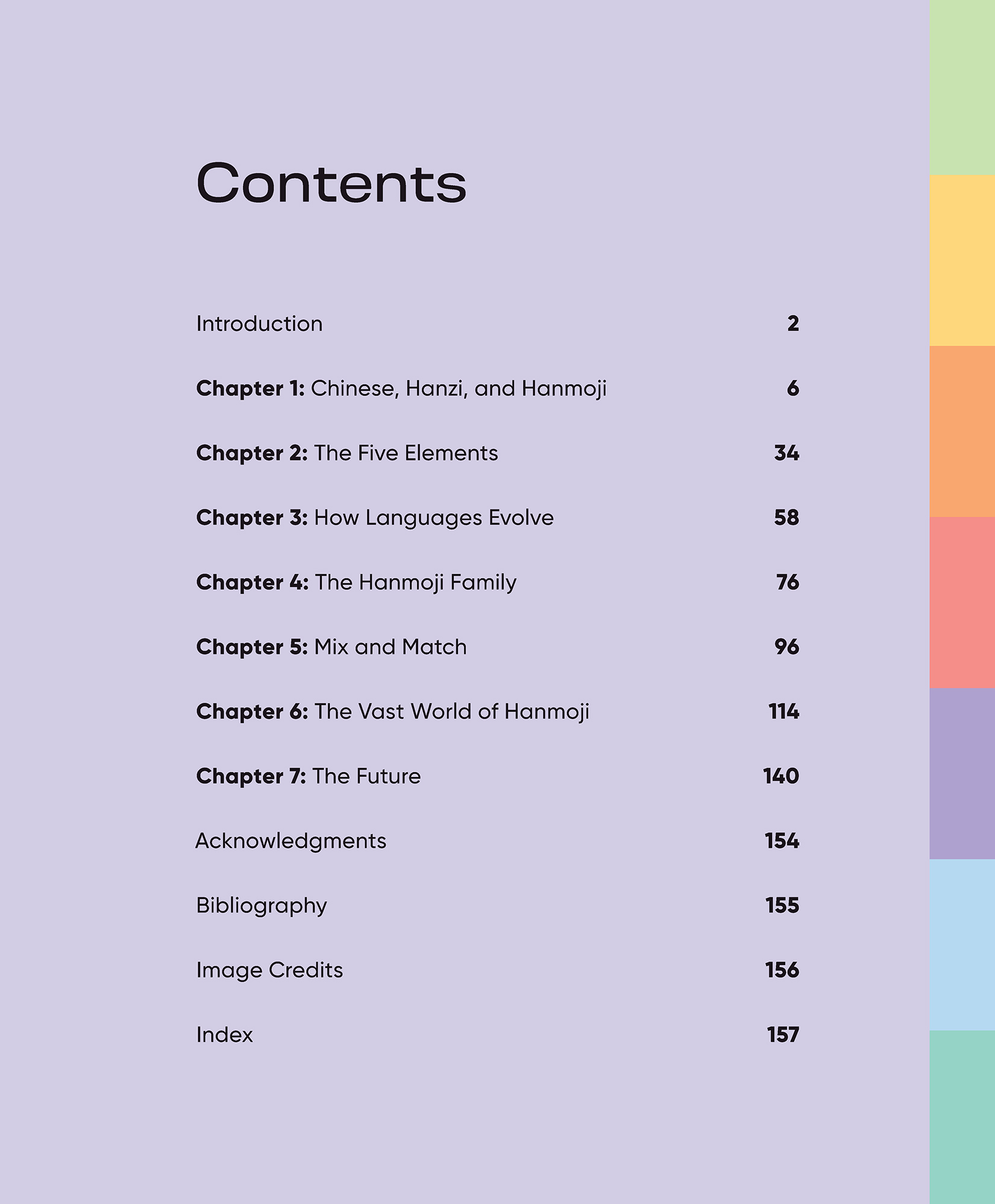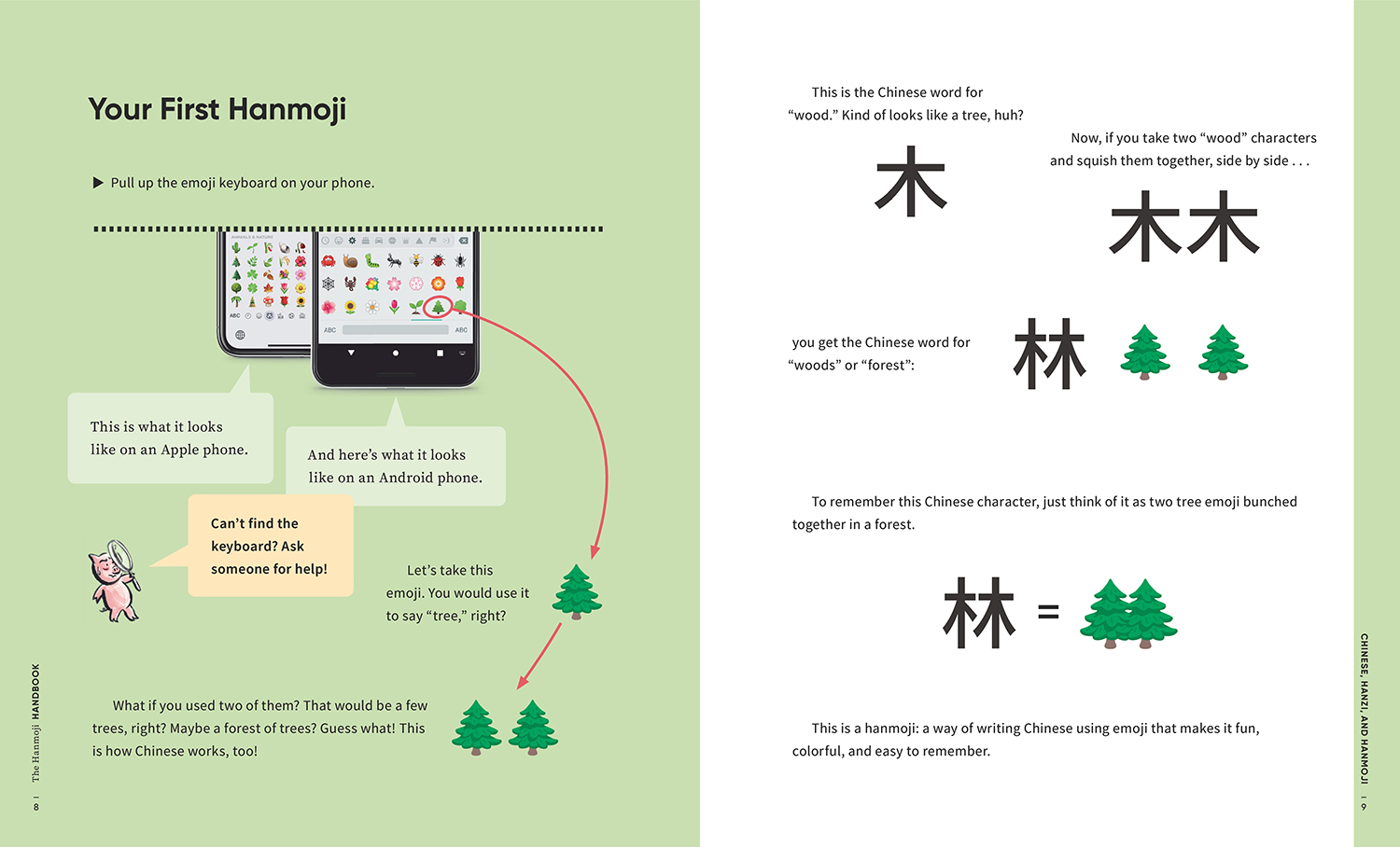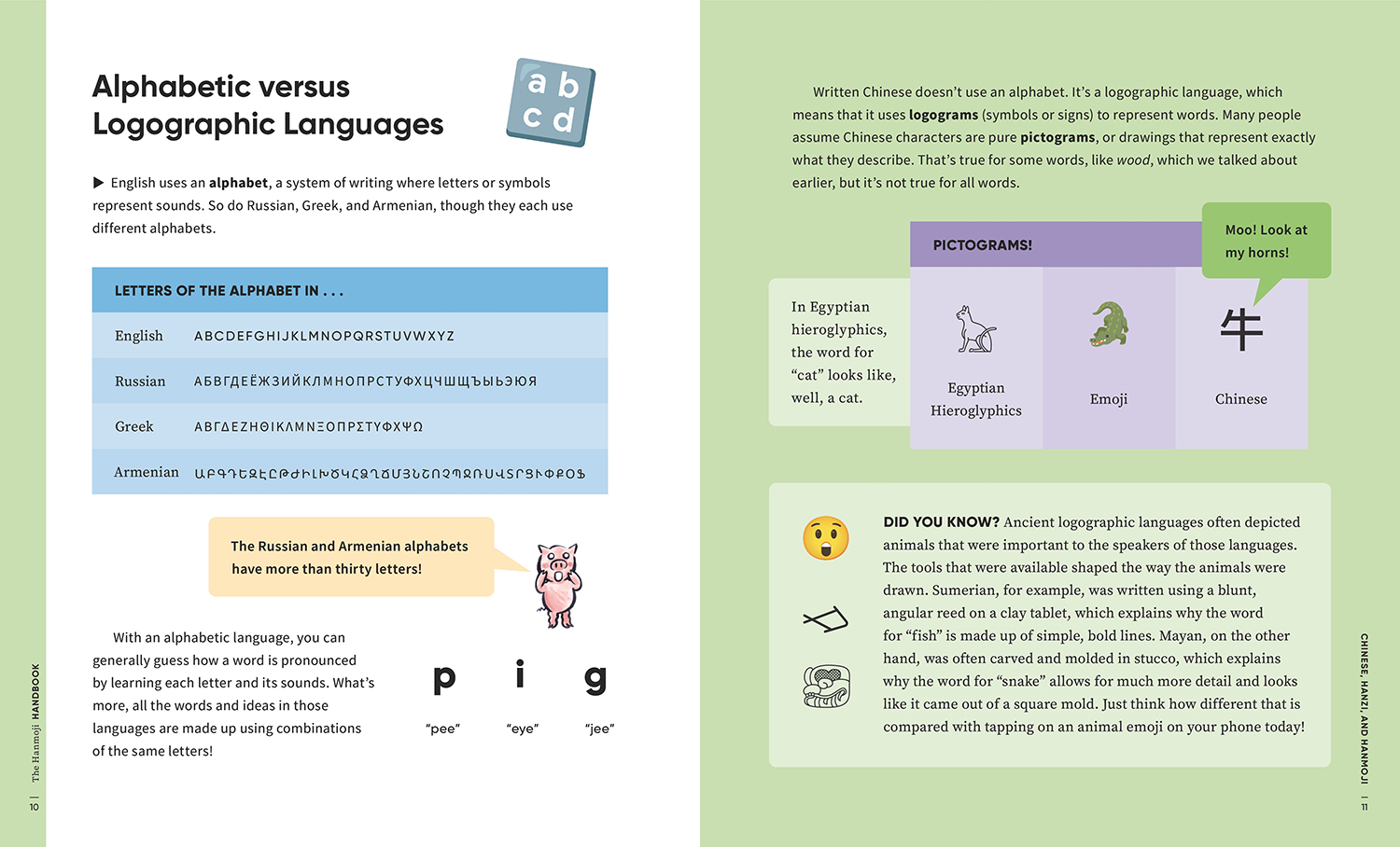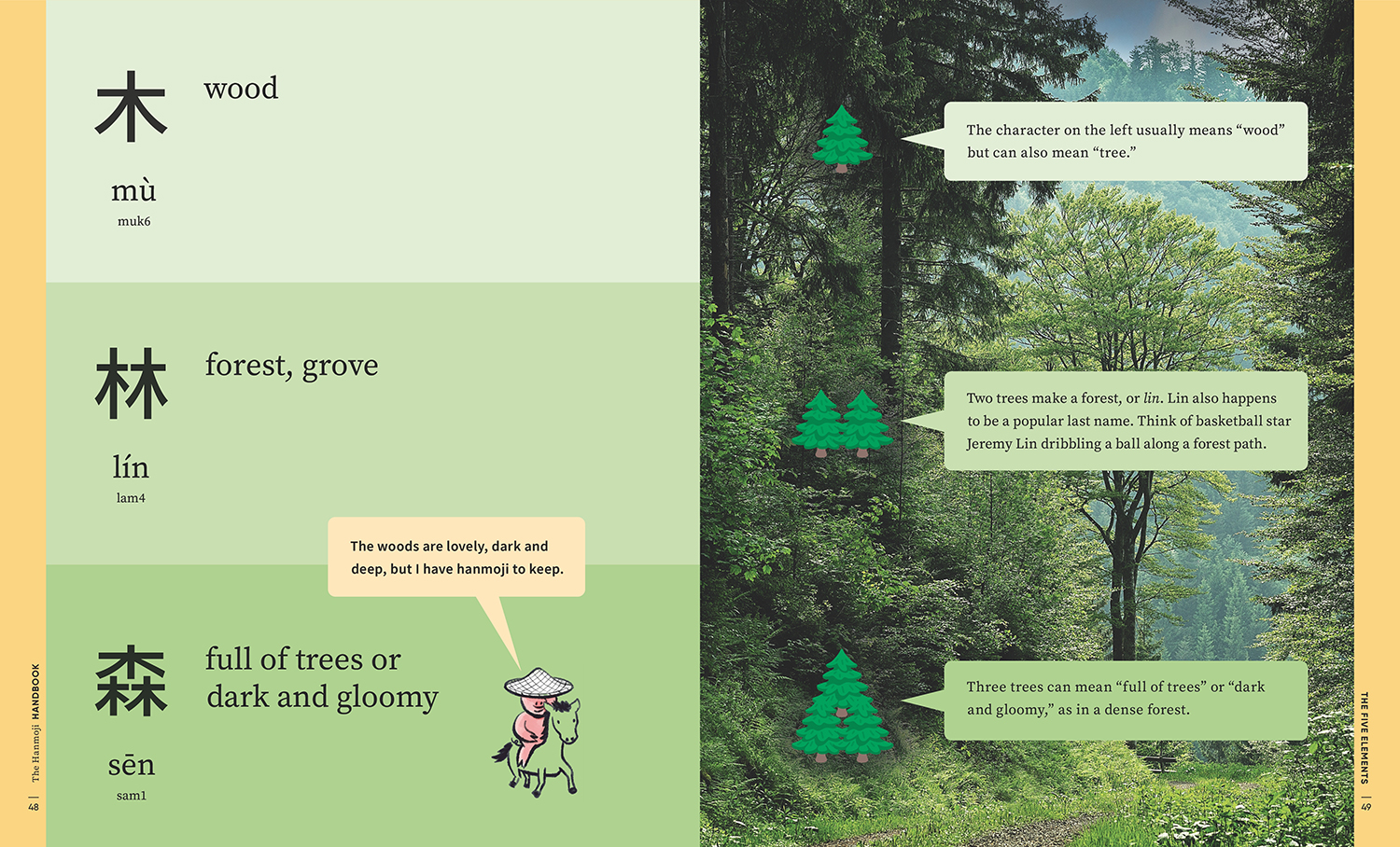Introduction
Hi!
It’s not every day a new writing system is born.
Emoji were developed in the late 1990s in Japan. Thanks to the spread of computers and mobile phones, emoji have traveled to the far reaches of the globe, and billions of them are sent across the internet every day, expressing joy, heartbreak, late-night snack cravings, and corny jokes. There are currently more than three thousand emoji, and many more are on the way.
Developed thousands of years ago and traditionally written with brushes, Chinese writing might seem to be a world away from the beeps and boops of online messages, but Chinese is one of the most popular languages online. More than eighty thousand Chinese characters are recognized in dictionaries, reflecting a long, diverse history of cultural evolution and writing.
What Chinese writing and emoji have in common is that they both convey meaning through images instead of an alphabet. Many of these images began as literal depictions of the world, from trees and birds to fire and water. Over time, both writing systems have evolved to suggest more complex concepts, like “that’s lit” or “thank you.”
We brought Chinese characters, or
hanzi (
hànzì/hon3zi6), and emoji together because, as lovers of languages, we enjoy exploring and playing with words. And what better way to do that than with one of the oldest living visual writing systems in the world (Chinese) and one of the newest (emoji)?
Hanmoji are a fun way of writing Chinese characters using emoji. We call this book
The Hanmoji Handbook because it’s filled with surprising insights emoji give us into understanding Chinese characters—and it provides ways to understand the parallel lives of these two writing systems, old and new.
We’ll begin around 1000 BCE as hanzi were first being developed, and span the years up to today, exploring how language grows and changes, how it’s shaped by technology, and what hanzi can teach us as we watch new languages develop. Along the way, we’ll also learn a few dozen Chinese words and a bit about
linguistics, or the study of language.
Ready to start?
(
zǒu ba/zau2 baa1)
Let’s go!
Copyright © 2022 by Jason Li, An Xiao Mina, and Jennifer 8. Lee; Illustrated by Jason Li. All rights reserved. No part of this excerpt may be reproduced or reprinted without permission in writing from the publisher.








